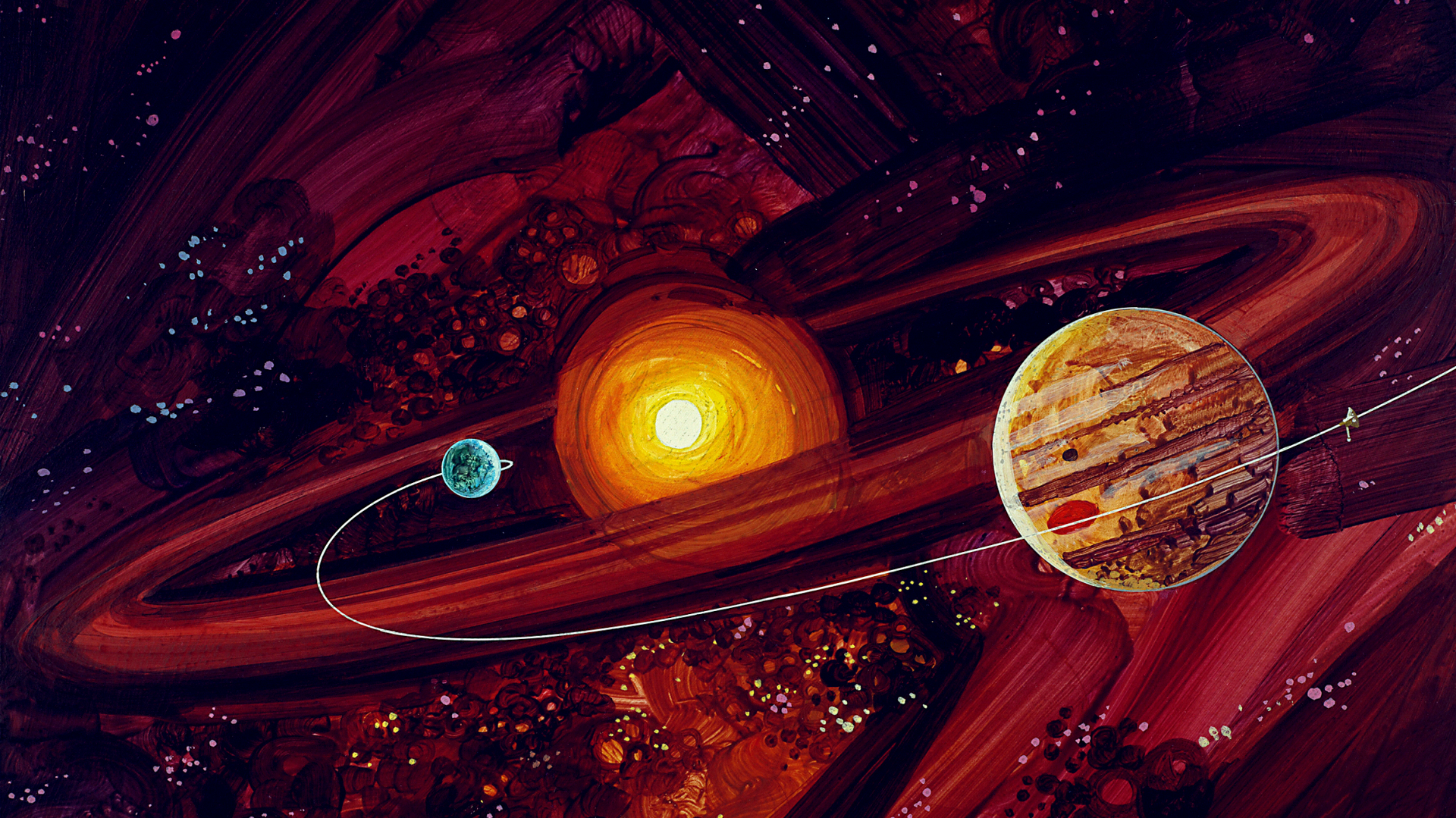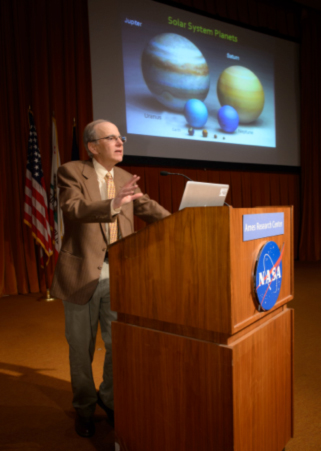2014 H. Julian Allen Award Winner – Jack J. Lissauer
The H. Julian Allen award is truly one of NASA Ames Research Center’s highest honors and this year is awarded to Dr. Jack Lissauer for his paper “Models of Jupiter’s growth incorporating thermal and hydrodynamic constraints.” Icarus, Volume 199, Issue 2, February 2009, Pages 338-350. The H. Julian Allen Award was established in 1969 to annually recognize a scientific or engineering paper of outstanding technical merit and significance. Understanding the evolution of planets within our solar system may inform the past, present and future of our planet. Dr. Lissauer has contributed greatly to our understanding of the development of Jupiter as a gas giant.
Abstract:
The four largest planets in our solar system contain considerable quantities of hydrogen and helium, which could not have condensed into solid objects within the protoplanetary disk. The hundreds of known large extrasolar planets also contain substantial amounts of these light gases. The preponderance of evidence suggests that giant planets begin their growth by the accretion of small solid bodies, as do terrestrial planets. However, unlike terrestrial planets, giant planet cores become massive enough to accumulate substantial amounts of gas before the protoplanetary disk dissipates. The results of the most comprehensive model of Jupiter’s growth yet completed will be presented. We follow the accretion of solids into Jupiter’s core and simultaneously model the accumulation of the planet’s atmosphere. Thermal pressure initially limits the amount of gas that Jupiter can accumulate. As the planet becomes more massive, its atmosphere collapses, and Jupiter’s ultimate mass is determined by the amount of gas that can flow from the protoplanetary disk into the planet’s gravitational domain.
Biography:
Dr. Jack J. Lissauer is a space scientist in the Planetary Systems Branch at NASA Ames Research Center, where he conducts research on planet formation, planetary dynamics and extrasolar planets, serves as an editor for the journal New Astronomy Reviews, and lectures as a consulting professor in the Department of Geological and Environmental Sciences at Stanford University. Prior to coming to Ames, Dr. Lissauer was an associate professor of Earth and Space Sciences at the State University of New York at Stony Brook. He has authored or co-authored more than 160 refereed scientific technical papers in planetary science and astrophysics, as well as two advanced planetary sciences textbooks. He has served as a scientific co-investigator for NASA’s Kepler and TESS spacecraft missions to discover transiting exoplanets. His previous awards include the Harold C. Urey Prize from the Division of Planetary Sciences of the American Astronomical Society (AAS), the Chambliss Writing Prize from the AAS and a NASA Honor Award for Exceptional Scientific Achievement. He is an Ames Associate Fellow and a Fellow of the American Geophysical Union.





























